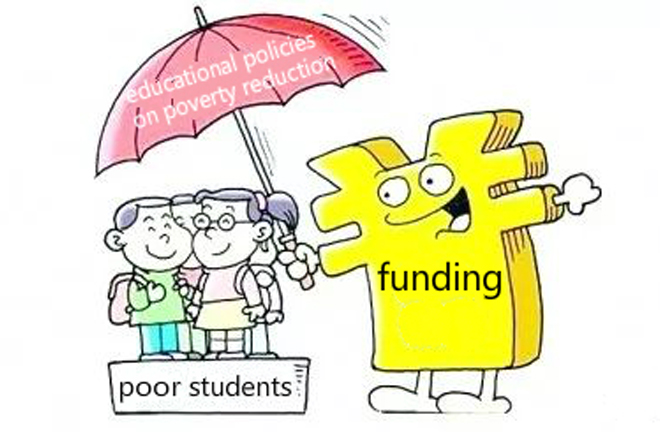Education to empower students to end generational poverty

It is necessary to establish an open, transparent, fair and equitable environment, so that education can reduce poverty through the establishment of a multi-party supervision mechanism. Photo:FILE
China will “launch an initiative to address school dropout rates, ensure attendance and achieve clear reductions in rural student dropout rates in poor areas,” according to the 2019 Government Work Report, and it will “continue to increase the size of special enrollment quotas at key universities for students from rural and poor areas and make full use of the fundamental role of education in stopping poverty from being passed on to the next generation.”
Gong Shengsheng, a member of the CPPCC National Committee and director of the Institute for Sustainable Development at Huazhong Normal University, joined CSST for an interview about his ideas on using targeted education to combat poverty.
Gong said that education can boost people’s spirit to shake off poverty and stimulate their efforts for a better life.
One can’t get rid of poverty without the wish or ambition to do so. Gong said, adding that education is a powerful tool for building skills. It is the solution to poverty alleviation. Compared with the intention, the proper ability to make it happen is more important. A skill that aids people to earn a living is an essential factor in poverty elimination. Such skills or functions must be obtained through education.
In terms of the current problems facing China’s education-based poverty alleviation projects, Gong pointed out that the way projects identify targets is not satisfactory in several respects. The system is not accurate enough to spot poor students who have been archived by local departments. Also, the values of subsidies given to students are fixed; they can’t be adjusted in accordance with individual situations. For example, every preschool kid and primary school student can get 1,000 yuan subsidy each year while every secondary school student 1,250 yuan. The difference only pertains to stage of education without considering the varying degrees of poverty. The selection of poor families entirely depends on income, so the real circumstances of poverty fail to be reflected. Therefore, children from some families with financial difficulties are not the beneficiaries of the subsidies.
Also, the care for poor students is not precise enough. The files on poor students mainly involve family income, parents’ labor conditions (disabled or not), school, grade and whether they are boarding students. The work ignores students’ study, psychological conditions and future ambitions. It only pays attention to financial aid while overlooking psychological care.
In addition, funding for poor students in vocational education is insufficient. The subsidy amount and identification accuracy of identifying poor students in vocational schools are much lower than those in compulsory education, increasing the vulnerability of poor families and hurting the sustainability of poverty alleviation.
To stop generational poverty through education, Gong suggested improving the filing mechanism for poor students. Poor families should be rated fairly. The subsidy amounts should be decided based on the real circumstances of poverty, rather than educational stages.
All the poor students who have been filed should be listed as recipients of the subsidy. Poor non-boarding students should also be covered. The provincial financial transfer payments will seal the funding gap in the poverty-stricken areas.
Teachers should care about their poor students’ psychology. Economic aid only solves temporary difficulties. Teachers should observe the emotional world of every poor student, guide their study and motivate their growth. Schools should also hire counselors for them in a timely manner. The cadres based in villages should help poor students with vocational education and employment training.
In addition, the country should cement the supervision of educational poverty alleviation projects. Many projects have been proven beneficial to poverty alleviation, but the enthusiasm of social forces has been seriously affected due to inadequate supervision and transparency in project implementation. Therefore, it is necessary to establish an open, transparent, fair and equitable environment, so that education can reduce poverty through the establishment of a multi-party supervision mechanism. These projects will thus harvest more social benefits.

 PRINT
PRINT CLOSE
CLOSE